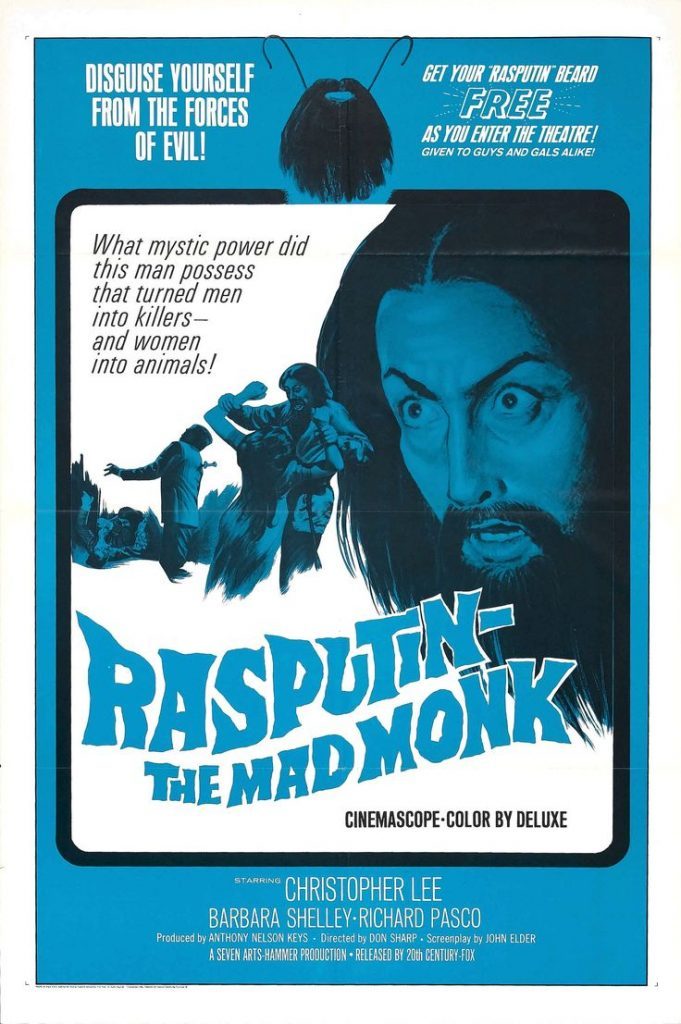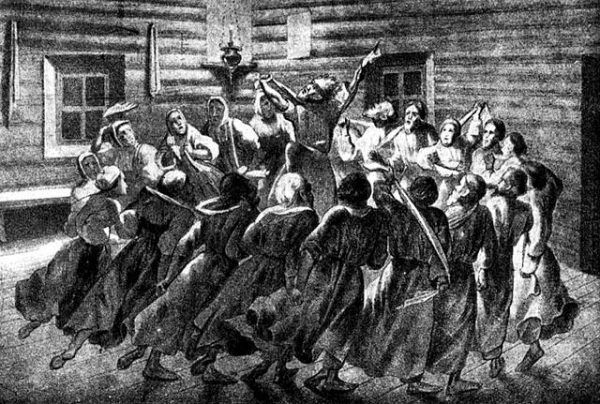Grigori Efimovich Rasputin was born in 1869 into a peasant family who survived by farming and the courier service that his father provided. Since there was less opportunity for education for those living in poverty, it is believed that Grigori was illiterate until he was older. During his youth, he was a petty criminal but had a revelation during his late twenties when he was motivated to go on a spiritual pilgrimage. It was at this point that he spent several months at St. Nicholas Monastery which was several hundred miles from his home. Upon his return, he was apparently a changed man and wandered for years as a Strannik or, “holy wanderer,” with a small group of loyal followers.
His Return as a Holy-Man
Once he returned home he created a church in the basement of his family’s basement; something that would later be considered the beginning of his religious blasphemy. It is believed that Rasputin had actually created a church in the name of the fringe sect of the Russian Orthodox Church by the name of Khlysty. The root of the word Khlysty, khlyst translates to the Russian, “whip”–the followers of Khlysty didn’t worship God or the Holy Spirit through the conventional means, by attending church or studying scripture, instead they believed they could communicate directly with their higher power.
Sinning to Be Rid of Sin
These ritualistic gatherings entailed Rasputin’s acolytes gathering in his would-be church to sing strange hymns and take part in orgies and various other sexual acts. Practicing self-flagellation and these orgies were designed to help believers attain grace by performing sinful acts, a belief that a willful practice of sin within ritual performance was ridding them of their sin altogether.
It was said that there would be one man and one woman designated to be physical representations of Christ and the Mother of God. Of course, these practices were never endorsed by church officials and his group of Khylysts were oftentimes persecuted by the mainstream Russian Orthodoxy. While this wasn’t an extremely long-lived part of his pursuit of spiritual enlightenment, he would continue the acts later in life, even after being accused by many women of assault and even rape.
Rasputin’s Infamy
This holy man’s charisma and influence are what led to his infamy in the early 1900s and he became one of the most well-known monks within monastic circles as a mystic with enormous power. He gained influence over the royal family in 1905, after having journeyed to St. Petersburg and befriended the Russian aristocracy, then cemented his status as a spiritual guide, healer, and eventually the political advisor to Nicholas II and the Czarina, Alexandra.
Rasputin was officially endeared to Alexandra and immediately caused them to form a significant bond, was his ability to heal her sick son, Alexei. Diagnosed with hemophilia, the inability to clot after an injury that drew blood, which was an incurable disease at the time. Rasputin, having the reputation of a healer was called to help heal Alexei after an internal hemorrhage would have meant his inevitable death. Two days after Rasputin’s faith healing, Alexei somehow made a full recovery which caused Alexandra to place her full trust in this strange, mysterious holy-man.
Being Seen For What He Was
Those who were outside of the immediate royal family could see his malignant hold over the Czar and Czarina and believed he would be the downfall of the Romanov family. These Russian court members referred to him as the Mad Monk and believed he was an immoral man who sought only to meddle in the affairs of royalty. This distrust spurred them to have him surveilled regularly, which revealed to them his true nature; they even created detailed records that took account of the many prostitutes he engaged with, as well as his lust over money and alcohol–they were of course published and circulated in newspapers which caused the people of Russia to oppose him as well.
The naysayers were right though, Rasputin’s hold over the Russian royal family brought the entire country to unrest during World War I. Rasputin even endeavored to make things worse when he told Nicholas II to take control over his military forces because he would otherwise face defeat. Unfortunately, following his advisor’s words proved to be a ruinous move for the Czar. Within the calamity of the First World War, the Czar was away at war, which gave Rasputin full opportunity to seize control over Russia’s government and the rich. This lowered his reputation as well as that of the royal family in such a way that even Alexandra, who was half German, was accused of being a German spy. Rasputin himself was regularly accused of using hypnosis to bend the wills of others and was said to have, “satanic eyes.”
The Many Assassination Attempts
There were so many attempts made against Rasputin’s life, but the final attempts were what proved to make him famous for being the man who would not die. In Moika Palace, Prince Yusupov and politician Purshkevich came together in an effort to take him down; he was given cakes and wine laced with lethal amounts of cyanide, but even two hours after eating the cakes and drinking the wine Rasputin didn’t seem to be affected by the attempted poisoning. It was at this point that Yusupov shot Rasputin several times in the chest, which after an elaborate attempt to cover up the shooting, found that this crazy monk was still alive. He even managed to escape outside, at which point he was shot in the back, then thrown into an icy river. When his body was recovered and an autopsy was performed, it was revealed that Rasputin only succumbed to death after drowning and by any of the other failed attempts.
Rasputin: The Mad Monk (1966)
Hammer Film Productions came out with this largely fictionalized story that features only half-truths about some of the events that led up to Rasputin’s assassination. The film shows us Grigori Rasputin, the Russian peasant who is a self-proclaimed mystic, holy-man, and healer; he had gained a powerful position of influence with the royal family prior to the Russian Revolution and World War I. Interestingly enough, the character of Yusupov within the movie had to be changed for legal reasons, since the real Yusupov was still alive when the film was released.

Who Is the Real Rasputin? – Russia’s Own Anti-Christ
The mystery of one of Russia’s most historically notable and powerful men, Rasputin, is often regarded with skepticism yet undeniable uncertainty. Shiver gave us a good in-depth look into Rasputin’s life and the kind of control he really had over the royal family.
The Mysterious Life and Death of Rasputin
The experts at TEDEd gave us their best explanation of the life and death of the holy-man Rasputin and how they believe he became the man who wouldn’t die.
Was He Truly an Occultist?
Widely considered to be the anti-Christ by the people of his day, it is speculated that Rasputin was deeply immersed in the occult, consorting with demons and eventually being possessed by them himself. Skeptics have found other theories to explain his inability to die after so many attempts, but it doesn’t account for Rasputin’s prophecy of his own death.

Georgia-based author and artist, Mary has been a horror aficionado since the mid-2000s. Originally a hobby artist and writer, she found her niche in the horror industry in late 2019 and hasn’t looked back since. Mary’s evolution into a horror expert allowed her to express herself truly for the first time in her life. Now, she prides herself on indulging in the stuff of nightmares.
Mary also moonlights as a content creator across multiple social media platforms—breaking down horror tropes on YouTube, as well as playing horror games and broadcasting live digital art sessions on Twitch.

